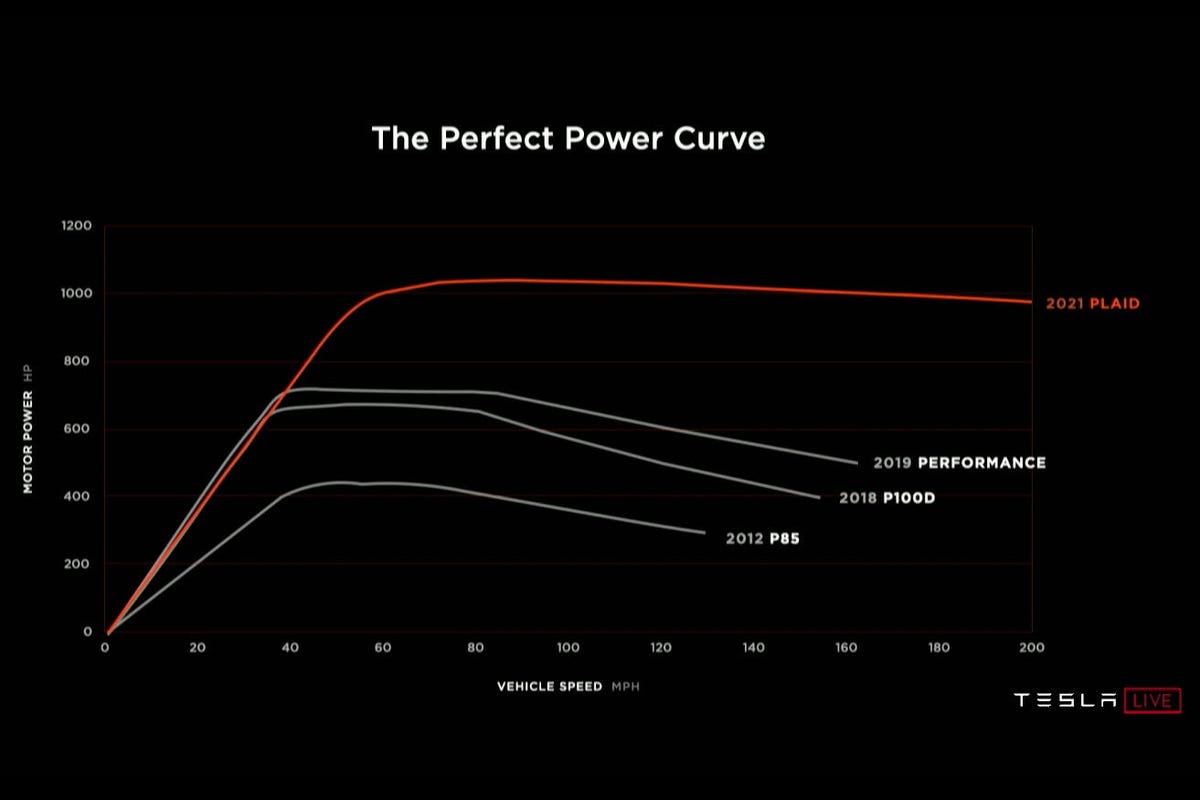If power is constant while rpm rises then it is not ideal because the torque drops.
Ideal is a motor with infinite torque and RPM, 100% efficiency, and no weight. So any discussion of "ideal" is kind of pointless.
Yes, if torque stayed constant, the power would increase at higher RPM. That would be nice, as it would keep acceleration constant and the tires at their limit of traction all the way to infinite speed. We're actually getting there as many of these EV's are traction limited to 60 MPH and beyond, so effectively we do have an ideal motor in that it can overpower the tires at all times and the motor is no longer a limit on the car's acceleration.
The reality is that the battery has a power limit. If you can do 1MW, then by definition your torque is going to go down as your RPM goes up.
This is the same as an ICE engine. It can't create more than X horsepower, but it does it over a narrow RPM band. So we have to put a transmission there, which just trades torque and RPM (reducing torque and increasing RPM as you shift up gears). The power stays the same in all gears, but the torque drops.
Power is just energy rate at which energy is transformed into force, but without mentioning the rotational speed to convert it to torque, it (energy rate) is useless.
No it's not. If you tell me you're putting 1MW into a 5,000 lb car, I can tell you how quickly it will accelerate. I cannot do that with only torque or RPM, and if you give me torque and RPM, I just multiply those to get power.
There's a reason you can get a general sense of a car's speed by just knowing the horsepower (which is the same as kW), even if you don't know the RPM and torque. You assume the gearbox is converting that to a usable wheel speed and torque.




